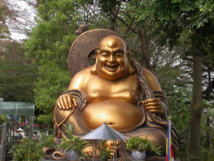The two experts will examine the piece after demands in the national parliament last year for the return of the bowl which the state-run Archaeological Survey of India (ASI) believes belongs to India.
"We will be sending two experts to Kabul to examine the bowl. We are very much in favour of bringing it back to India," ASI additional director general B. R. Mani told AFP late Monday.
"They will examine if the raw material has been sourced locally from one of the Afghan cities. If not, it will strengthen our claim that it belongs to us," Mani said.
India's attempt to reclaim the bowl follows efforts to have other artifacts returned from around the world, including the Kohinoor diamond -- the centrepiece of the British crown jewels.
The 105 carat gemstone was seized by the East India Company and became part of the British Crown Jewels when Queen Victoria was proclaimed Empress of India in 1877.
India has made regular requests for its return, but Britain has made clear the diamond is going nowhere.
The director of the National Museum in Kabul said the Indian archaeologists were welcome to come and see the bowl for themselves.
"But if they make a demand (for) it be sent to India or so, then it is a matter that needs to be discussed by the governments of both countries," Omara Khan Massoudi told AFP.
The ASI says its historical documents and research suggests that Buddha himself could have donated the bowl, which is 1.75 metres (5.7 feet) in diameter, to the people of Vaishali, a Buddhist pilgrimage site in the eastern Indian state of Bihar.
A king who ruled northern India and other parts of Asia in the second century took the bowl to what is now Peshawar in Pakistan, before being moved to what is now Kandahar in Afghanistan, ASI says its research shows.
The bowl was then believed to have been moved to the Kabul museum during the Soviet war in Afghanistan in the 1980s.
ASI's research is backed by that of Alexander Cunningham, a British archaeologist and historian in the 1800s, who wrote about an elephant that collapsed under the weight of the bowl while trying to carry it in India.
"In Buddhist monasteries such huge stone troughs used to (be) kept at the entrance gates as donation bowls. This bowl was also perhaps used similarly," Mani said.
The greenish-grey granite bowl has a lotus flower chiseled around its base, suggesting its Buddhist past. The bowl was later inscribed along its rim with rows of Arabic script, said Mani.
The experts are likely to fly to Kabul next month.
The safety of Buddhist relics in Afghanistan caused concern after the Taliban destroyed monumental Buddha statues carved into a hill in Bamiyan province in 2001.
-------------------------------------------------------
"We will be sending two experts to Kabul to examine the bowl. We are very much in favour of bringing it back to India," ASI additional director general B. R. Mani told AFP late Monday.
"They will examine if the raw material has been sourced locally from one of the Afghan cities. If not, it will strengthen our claim that it belongs to us," Mani said.
India's attempt to reclaim the bowl follows efforts to have other artifacts returned from around the world, including the Kohinoor diamond -- the centrepiece of the British crown jewels.
The 105 carat gemstone was seized by the East India Company and became part of the British Crown Jewels when Queen Victoria was proclaimed Empress of India in 1877.
India has made regular requests for its return, but Britain has made clear the diamond is going nowhere.
The director of the National Museum in Kabul said the Indian archaeologists were welcome to come and see the bowl for themselves.
"But if they make a demand (for) it be sent to India or so, then it is a matter that needs to be discussed by the governments of both countries," Omara Khan Massoudi told AFP.
The ASI says its historical documents and research suggests that Buddha himself could have donated the bowl, which is 1.75 metres (5.7 feet) in diameter, to the people of Vaishali, a Buddhist pilgrimage site in the eastern Indian state of Bihar.
A king who ruled northern India and other parts of Asia in the second century took the bowl to what is now Peshawar in Pakistan, before being moved to what is now Kandahar in Afghanistan, ASI says its research shows.
The bowl was then believed to have been moved to the Kabul museum during the Soviet war in Afghanistan in the 1980s.
ASI's research is backed by that of Alexander Cunningham, a British archaeologist and historian in the 1800s, who wrote about an elephant that collapsed under the weight of the bowl while trying to carry it in India.
"In Buddhist monasteries such huge stone troughs used to (be) kept at the entrance gates as donation bowls. This bowl was also perhaps used similarly," Mani said.
The greenish-grey granite bowl has a lotus flower chiseled around its base, suggesting its Buddhist past. The bowl was later inscribed along its rim with rows of Arabic script, said Mani.
The experts are likely to fly to Kabul next month.
The safety of Buddhist relics in Afghanistan caused concern after the Taliban destroyed monumental Buddha statues carved into a hill in Bamiyan province in 2001.
-------------------------------------------------------









 Home
Home Politics
Politics











